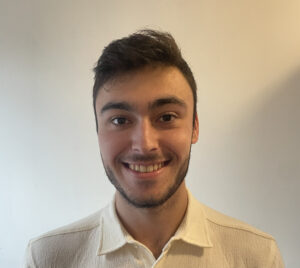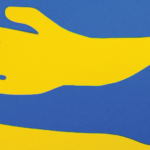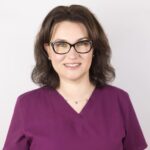The surgery lasted three to four hours, and the patient was thankful to the visiting surgeon who delivered his care, says Mr. Najman-Licht.
“Because it’s war time, I was able to be in the OR [operating room] and up close to see the surgery, which was really an incredible experience that I don’t know I would have gotten otherwise,” says Mr. Najman-Licht. “I was able to see him and the Ukrainian surgeon, as well, perform the surgery, from start to finish.
“It was really an amazing thing to see and hopefully the patient continues to get better and all is okay.”

Mr. Najman-Licht
Helping Hand from Holocaust Scholar
A Holocaust scholar, who is Dr. Rackoff’s patient back home, gave the rheumatologist money to help patients she encountered during the medical mission.
“She gave me a $100 bill and 10 fives to give out, and she doesn’t want to know who it went to,” says Dr. Rackoff.
Dr. Rackoff met a woman in her 50s seeking seizure medicine for her 13-year-old son who has schizophrenia and epilepsy. There was no seizure medicine, so Dr. Rackoff gave her the $100. The money would allow the woman to go to a pharmacy and buy her son at least one month of seizure medicines. An interpreter explained that it had been donated by a professor of Holocaust studies, but the woman didn’t know about the Holocaust, says Dr. Rackoff.
“It never dawned on me that one of the benefits—if I can call it that—of coming here is to really help people recognize the history that they not only don’t know but is being repeated,” says Dr. Rackoff.
“It also opened my eyes how big and small the world can be.”
Mission Possible
Dr. Pillinger and Mr. Najman-Licht say they are grateful that Dr. Rackoff encouraged them to join the mission, which numbered about 20 volunteers, mostly from the U.S.
“It’s a really beautiful thing to see all these different people with different backgrounds coming for the same reason and the same goal,” says Mr. Najman-Licht, “to help other people, even if it’s in the most minute way.”
Dr. Rackoff credits NYU Langone for making the mission possible.
“None of this could have happened without NYU saying yes,” says Dr. Rackoff. “So I feel very grateful for that.”
Dr. Rackoff enjoyed meeting three Ukrainian rheumatologists, two from Kyiv, the country’s capital. The third is from Sumy, Ukraine, about 30 km from Russia’s border.


